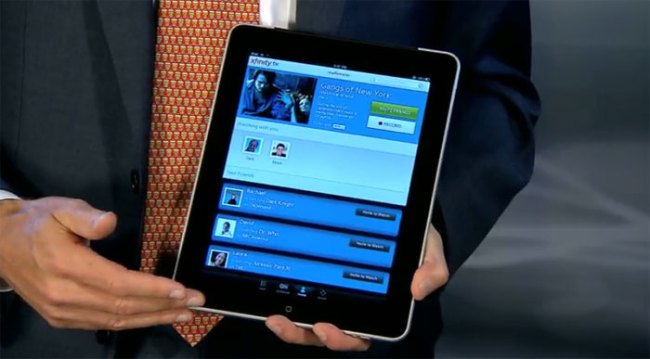
Have you ever been watching a show on TV when you came across something you thought that one of your friends would really enjoy? Well now there’s an app for that- and this app could soon replace all the remotes in your house.
One of the biggest complaints about OnDemand on the TV is the difficulty to navigate through the clunky menus. Without a keyboard, the search feature can also become clunky, and difficult to navigate as well. A new app could fix all that.
Business Insider is reporting that the new app is browser based, and will send a command over the network to the Comcast/Xfinity cable box. Once the connection is complete, the app will act as a standard remote control, allowing you to do the basics like changing the channel and controlling the volume, but it will also allow you access to the menus Comcast offers through a streamlined set of menus that make navigation much easier.
If you want to check out the OnDemand selection, the iPad will display the categories and allow you to search through the choices. You can also use the iPad as a TV guide, and check on upcoming programs. If you have a DVR, you can use the app to set a recording, or alternatively you can go through and mange your saved programs.
One of the more interesting additions is the ability to connect to a friend. If you are watching a show that you think your friend would like, you can bring up their profile on your app and send them a request for them to watch the channel. Assuming they also have the app, clicking on the “accept” button will take the recipient to the same channel.
The app is supposed to work with all Comcast boxes, buit no word yet on when it will be released to the public.
Update: This post has been edited to correct an error.
Editors' Recommendations
- The best hurricane trackers for Android and iOS in 2022
- From iPads to Apple Watches, tech has changed Major League Baseball forever
- The Double 3 telepresence robot is now much more than an iPad on wheels


